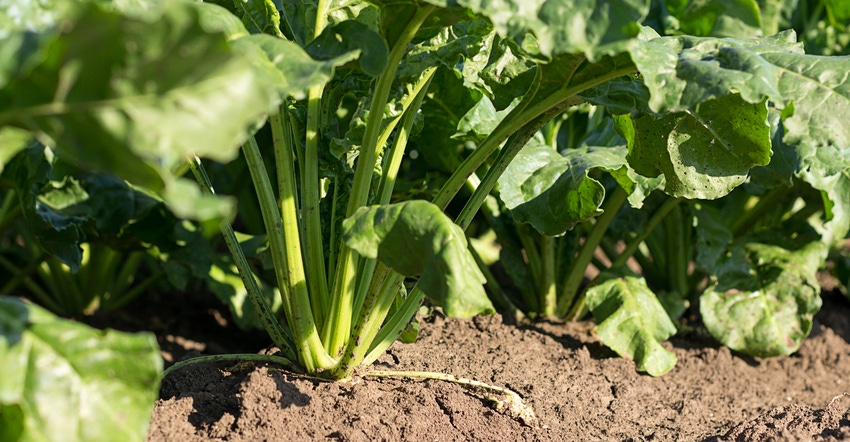August 13, 2020

With the sugarbeet crop looking good and pre-pile harvest getting scheduled to begin in mid-August, growers might want to consider planting a cover crop in their sugarbeet fields.
Anna Cates, University of Minnesota Extension’s state soil health specialist, wrote in a recent blog that cover crops can make a big impact in several ways, even if pre-pile harvest acres represent only a small portion of the whole field.
Cates notes that headlands usually have compacted soils in need of remediation.
“Headlands are a great location to incorporate a large-rooted brassica like radishes, rapeseed, or turnips to loosen the soil,” she says.
However, be careful to select a radish variety like Defender, Image or Colonel, as they act as a trap crop, not a host, for sugarbeet cyst nematode.
Another plus for early harvested strips planted to cover crops is that you will have a windbreak over the winter. That will slow wind speeds and reduce soil erosion. In this case, including cereal rye or another overwintering species in the cover crop mix will provide coverage until the following spring.
Cates gave the following tips:
Establishment. You can broadcast cover crop seed in pre-pile acres using a spinner-spreader or air seeder ahead of the defoliator, and the sugarbeet harvest process can effectively incorporate the seed. After pre-pile harvest, you can either broadcast with light incorporation for best germination or drill the seed.
Note that seeding rates are about 50% higher for broadcast, non-incorporated seed than for drilled, or incorporated seed. Make sure you use tagged, cleaned seed. This should help you know what variety of seed you are planting and the germination percent, plus help ensure you have seed virtually free of unwanted weed seed.
Cereal rye is a great choice for cover crop beginners, alone or as part of a mixture. If sugarbeets are lifted before Sept. 1st, you may wish to plant a mixture of a grass, brassica, broadleaf or legume to diversify.
Diversifying can offer more carbon sources to build soil organic matter, a variety of root architectures to build soil structure, and can increase cover crop success, as different species thrive in different conditions. However, make note of any soil residual herbicides used on the field as some cover crops have occasionally shown sensitivity to the group 15 herbicides (e.g. Dual II Magnum) used in sugarbeet.
Termination. Develop a plan for terminating over-wintered cover crops in 2021. Assess the cover crop and soil early in the season to determine what spring tillage, if any, may be needed to prepare the seed bed.
If your next crop is corn, plan to terminate cereal rye or other grasses at least 10 days before corn planting. A full rate of glyphosate is reliably effective.
In contrast, soybeans can usually tolerate a shorter window between cover crop termination and planting, and producers have been “planting green” into living grass cover crops.
If planting green, be ready to terminate shortly after soybean planting, and follow USDA-NRCS Cover Crop Termination Guidelines to ensure compliance with crop insurance standards, which vary by region.
A shorter window between cover crop termination and planting or termination after planting helps maximize cover crop biomass production and therefore residue coverage and weed suppression in your cash crop. However, this practice increases the risk of disease or insect pest issues in the cash crop and the potential for cash crop yield loss if the cover crop is not successfully terminated in a timely manner.
Cates says she would like to hear from growers who plant a cover crop on pre-pile sugarbeet acres. She would appreciate seeing how it establishes, overwinters and looks next spring. Contact her at [email protected].
Source: University of Minnesota Extension, which is solely responsible for the information provided and is wholly owned by the source. Informa Business Media and all of its subsidiaries are not responsible for any of the content contained in this information asset.
You May Also Like




